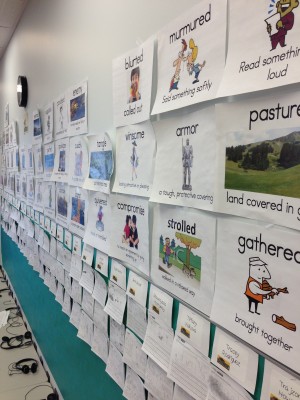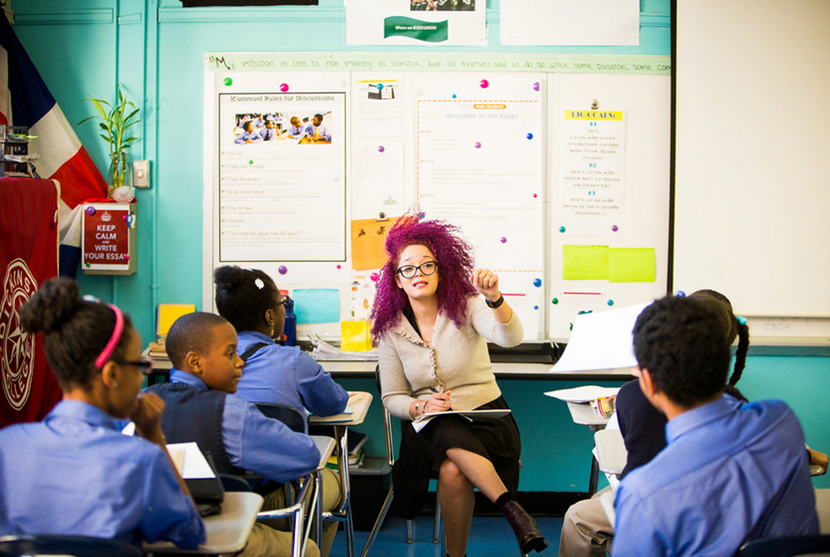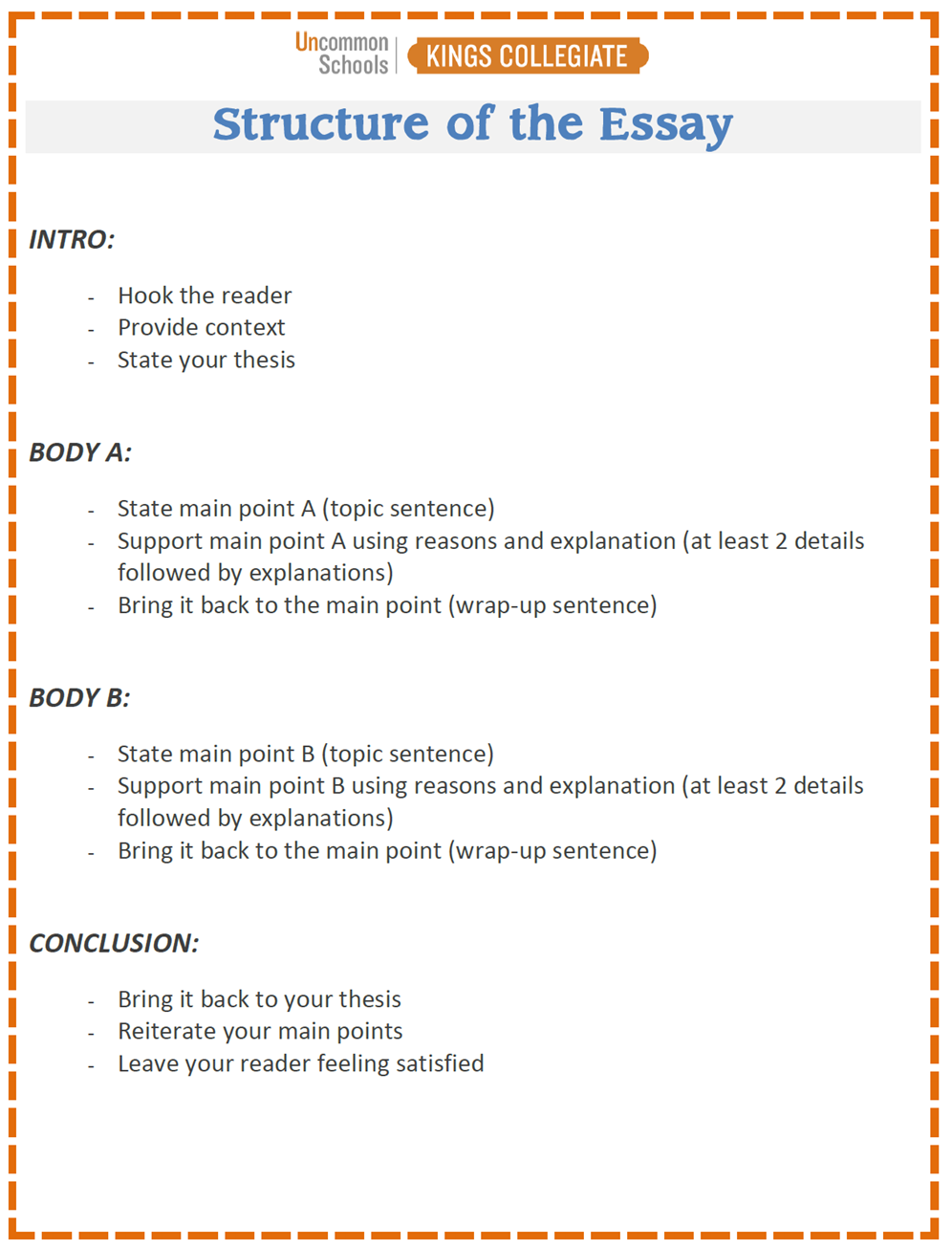04.02.14What’s on Your Walls?–A Photo Essay
Really enjoyed posting a couple of still photos of classrooms recently here and here. People seem to find them really useful. So I’m going to run with the idea and make this post into a mini photo essay of classrooms on the theme of The Usefulness of Walls. First a quick primer from the pages of TLaC 2.0:
The first rule of thumb for walls in the best classrooms is that they should help, not harm. This means that they should avoid clutter and over-stimulating too-much-ness. A few critical things should be up, and they should not distract students’ attention from the primary instructional space by being too close to it. Posted items are best when they focus on useful tools: reminders of key steps in adding fractions; examples of common themes; seven types of conflict in a story; pictures representing recent vocabulary words; rules for bathroom use; phrase starters for agreeing or disagreeing with a peer during discussion.
SCRAPBOOK PAGE 1:

Here’s a use of walls that I love- These are the vocabulary words for first graders at Troy Prep–this is Linda McGriff and Brittany Rella’s room but they use the same word and develop the pictures together with the other first grade teachers, Courtney Little and Megann Rice. (Aside: think of how cool it is to have shared vocabulary words across a grade level; anyone interacting with first graders–music teacher, gym teacher, tutor, etc–can plan to use and refer to a consistent set of vocabulary words for all their interactions.)
When Troy Prep ‘prepsters’ are introduced to a word, their teacher shows them a picture of it with the word and definition underneath. They discuss why and how the picture demonstrates the word, ideally in various ways that go deeper, even, than the definition in exploring some of the complexity or nuance of the word. Then, with the word cards posted, kids can glance at a reminder that gives them a rich and evocative image that activates their own recollection of the word. And ideally it’s a multi-dimensional recollection. Pow! All students have to do is glance at the wall and it becomes easy to start using the words they’re learning. Or Linda can direct her students to look at the wall and choose a vocabulary word that works. That to me is functional wall space- and wall space allocated to its highest possible use, building word knowledge.
As an aside just beneath the vocab words is each student’s name and three last three examples of their monthly write–reduced by half or more in the copying but still legible so they and their teacher can see how their writing has grown over time.
As a double aside note the calming geometric consistency to the posting. Simple, visually predictable, and therefore easy to scan for what you want are all beneficial attributes of wall postings.
SCRAPBOOK PAGE 2:
I also really like this photo of 6th grade writing teacher Flosha Tejada’s room at Kings Collegiate.
 On the wall, in much the same simple, visually predictable, and therefore easy to scan style of the previous photo, Flosha has two posters up: “Common Rules for Discussion” and “Structure of the Essay.” They’re incredibly useful to the two most important tasks of Flosha’s class (writing and discussing writing) and are simple, home made (and therefore tailored to her specific expectations) and visually appealing.
On the wall, in much the same simple, visually predictable, and therefore easy to scan style of the previous photo, Flosha has two posters up: “Common Rules for Discussion” and “Structure of the Essay.” They’re incredibly useful to the two most important tasks of Flosha’s class (writing and discussing writing) and are simple, home made (and therefore tailored to her specific expectations) and visually appealing.
She described them as follows:
The essay poster is a simple breakdown of the basic parts of an essay. It is my anchor poster from my lesson on “The Organization of the 6th Grade Essay” and has been living on our white board ever since (October). This poster is so clear and simple it makes essays look easy!
I am super proud of the Rules for Discussion poster, since I created that one from scratch this summer after learning about the huge *Common Core push for collaborative work and discussions in the classroom. I wanted the poster to motivate students to engage in “normal” / “common” human dialogue, to… feel empowered to share their ideas while elaborating on others’. *Common Core standards referenced in my train of thought are here: http://www.corestandards.org/ELA-Literacy/SL/6/
Some of the highlights of Flosha’s Common Rules for Discussion Poster are are reminders to stay on topic, track the speaker and to avoid developing angry feelings for people you disagree with.
The actual posters appear below but I couldn’t close the discussion without noting my very favorite part of Flosha’s classroom: The “Keep Calm and Write Your Essay” poster. Now THAT deserves to be on a t-shirt.



Everything on my classroom walls would be cooler if I had purple hair, too.
Well, Matt, what’s stopping you? 🙂
She’s got FABULOUS hair, but can we please please please stop teaching our No Excuses students to write to a formula? In my experience, this work produces better-looking writing… but woefully underprepared WRITERS.
No slam on this teacher, who sounds wonderful and who is doing what she has been taught — but when elementary and middle school teachers lean on these scaffolds, they’re doing damage that some high school teacher somewhere (cough ME cough) is going to have to undo later.
Sooner or later, kids have got to learn how to really write. Privileged kids start in kindergarten. How long do our kids have to wait?
I don’t totally disagree with you. I guess I might argue that it’s reasonable to start with a structure or model that explains the general rule…but then you have to teach and socialize kids to break the rules and make the structure serve their writing rather than vice versa. It actually might be a cool thing to try to add to your poster- a reminder of the “default and some subversive character lurking in the background looking for a way to break some rules…. something like that.
The only thing i’d argue with is that i’m not sure privileged kids can write all that much better. It’s a place where we’ve got a lot of work to do. 🙂
By the way as a complete aside–i am moderately obsessed with writing right now–for me the cause of the wooden-ness of student writing is not enough focus on the nuanced and dynamic use of the basic building block–the sentence. We don;t tend to ask students to write and re-write really great sentences over and over and over to meet different demands and challenges so our kids try to construct essays out of lock-block “I think bing; I think boop” sentences, all stacked in a row. I discuss this more in my posts on “Art of the Sentence” but i think the fastest route to better essays is better sentences. Just my two cents worth. I’m stopping now. I promise.